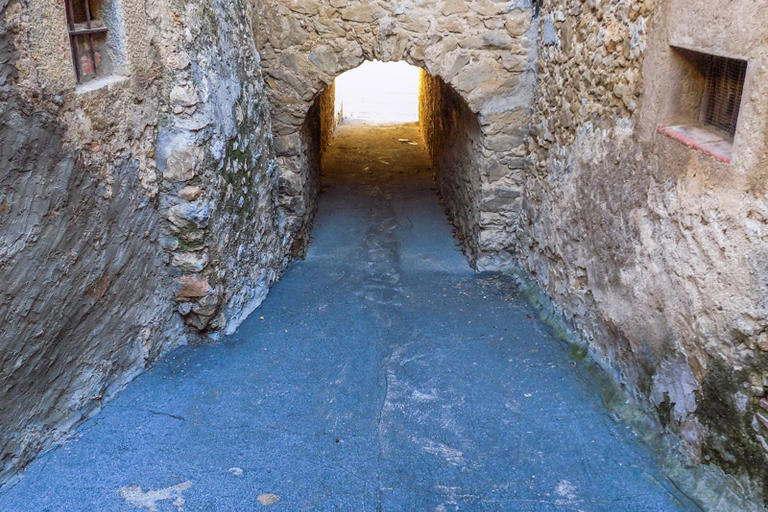
Introduction
You now enter for the first time the oldest part of the historical village of Ullà through the gate on Carrer de la Muntanya, which was one of the gates that allowed entry to the village, and which marks the outline of the original medieval walled village on the eastern side.
This gate, and its narrow passageway under a building, leads to a little square just behind the old Church of Sant Andreu, known since 1182 as belonging to the old priory of Santa Maria d’Ullà. With the construction of the new parish church, located a few metres away, it stopped being used for worship and became municipal property and is now a cultural facility.
You now follow an alleyway until you come out in front of the façade of the Church of Santa Maria, built in the eighteenth century, with the curved ornamental top and portal typical of the baroque, and with its bell tower unfinished. The twelfth-century image of the Mare de Déu de la Fossa is worshiped there.
Go down the steps that separate the church from Carrer de l’Església and continue along Carrer de Sant Antoni, where it is worth noting the house at number 14. This Renaissance house was built or rebuilt in 1512 as stated on the lintel of one of the windows and has an attractive doorway with a round arch and three large windows on the first floor.
Just in front of this house, take the Carrer Jeroni Pujol, which is narrow and winding, with many houses from the seventeenth century, especially those at numbers 7 and 9, one of which has a lintel from 1619.
Leave the village on the Carrer Major and the Camí Fondo.